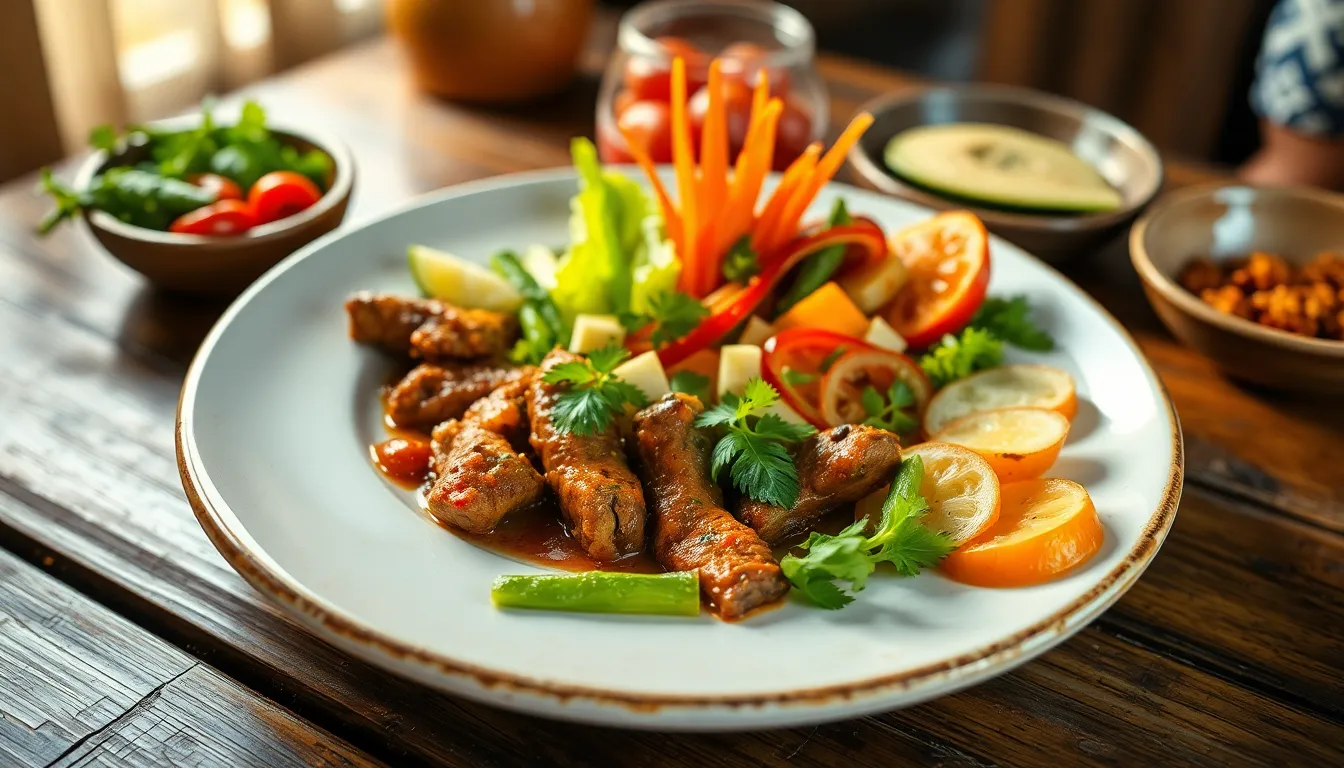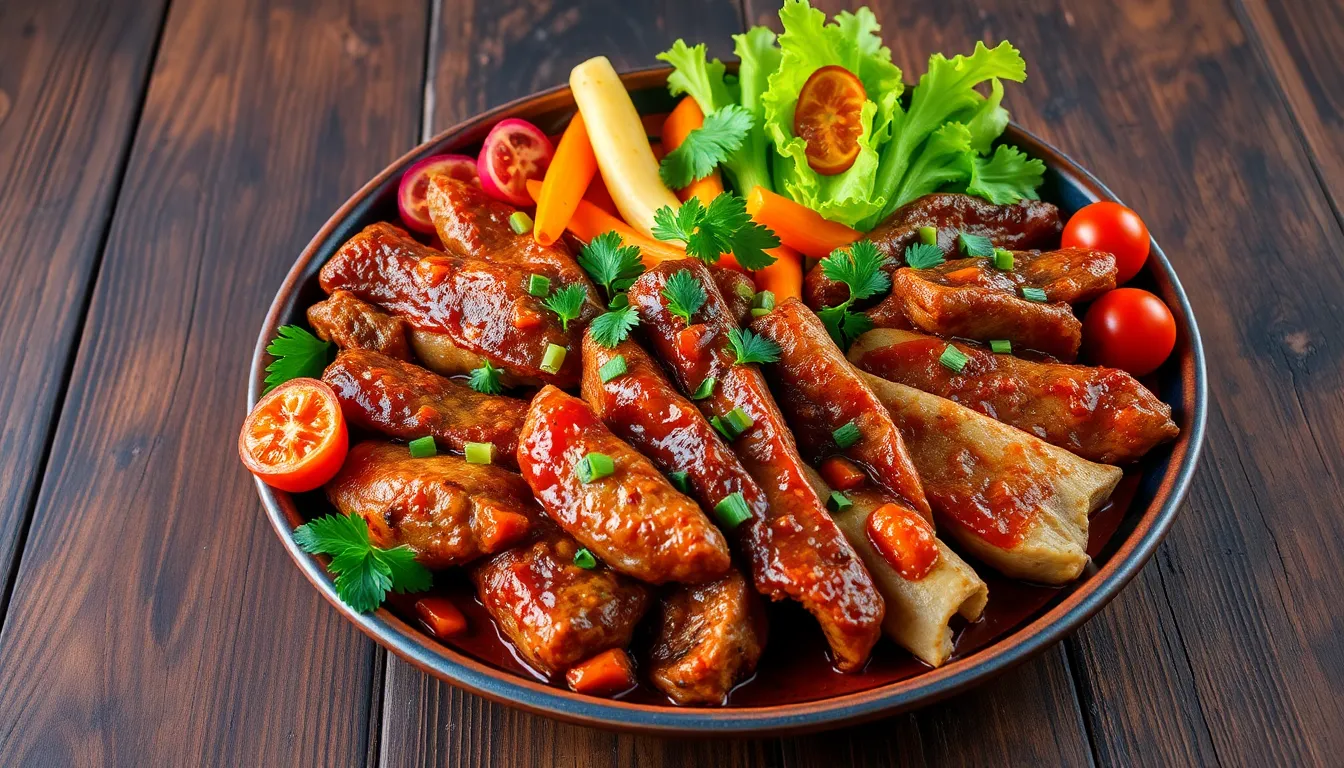In the vibrant world of culinary delights, few dishes can rival the charm of cokiadora. This mouthwatering creation captures the essence of flavor and tradition, making it a must-try for any food lover. Imagine sinking your teeth into a dish that’s not just a meal but an experience that dances on your taste buds.
Table of Contents
ToggleOverview of Cokiadora
Cokiadora features a unique blend of ingredients that creates a vibrant taste profile. This dish typically includes marinated meats, often seasoned with spices local to its region. Fresh vegetables complement the protein, enhancing both texture and flavor.
Traditionally served during celebrations or family gatherings, cokiadora embodies cultural heritage and culinary artistry. Its preparation is an art form, with various cooking techniques employed, such as grilling or slow-roasting.
Cokiadora varies by region, and each locality adds its twist. Some versions showcase seafood, while others lean toward vegetarian components, appealing to a broader audience.
Preparation requires attention to detail; marinating meats enhances flavor engagement, and selecting seasonal vegetables ensures freshness.
Cokiadora is not just a meal; it represents a communal experience. Sharing this dish encourages connections among diners, creating a warm, inviting atmosphere.
Taste enthusiasts often praise cokiadora for its aromatic spices and balanced flavors, making it a standout in culinary circles. Chefs frequently experiment with presentations, transforming this dish into an eye-catching centerpiece.
Exploring local variations offers insight into regional traditions and culinary influences. Restaurants specializing in authentic cokiadora often highlight its historical roots, celebrating the dish’s journey through time. Each version tells a story, inviting diners to discover its rich background and flavor notes.
Features of Cokiadora
Cokiadora boasts distinctive features that enhance its appeal and experience. Detailed elements contribute to its cultural significance and culinary artistry.
Design and Build Quality
Craftsmanship defines cokiadora’s design, as chefs prioritize the use of quality materials and traditional methods. Durability appears through robust cooking techniques unique to each region. Vibrant colors of fresh ingredients create an appealing visual presentation. Attention to detail manifests in the arrangement of components, making each serving a beautiful display. Chefs ensure consistency in build quality, which significantly impacts the overall dining experience.
Performance Specifications
Flavor complexity highlights performance specifications of cokiadora. The use of marinated meats showcases perfect seasoning with local spices, enhancing taste profiles. Fresh vegetables contribute to a delightful texture, making each bite enjoyable. Cooking methods like grilling and slow-roasting guarantee optimal flavor extraction and tenderness. Regional variations influence ingredient choices, ensuring each version of cokiadora remains unique and memorable. Chefs’ creativity pushes the boundaries, motivating diners to explore these various adaptations.
Benefits of Using Cokiadora
Cokiadora offers a delightful combination of flavors and cultural connection. Diners often find themselves immersed in a vibrant culinary journey associated with this dish.
User Experience
Taste and aroma define the cokiadora experience. Patrons describe the dish as inviting and comforting, contributing to a sense of community during shared meals. Interactive dining fosters conversation and engagement among guests. They relish the opportunity to customize their plates, choosing from an array of marinated meats and fresh vegetables. Each component enhances the overall enjoyment of the meal. Enthusiasts appreciate the ambiance created by the dish, which often becomes a centerpiece during gatherings. Savoring cokiadora leads to memorable culinary moments shared with friends and family.
Versatility in Applications
Cokiadora adapts to various culinary settings effortlessly. Chefs utilize regional ingredients to create unique interpretations of the dish. Options include seafood variants or vegetarian selections that cater to diverse dietary preferences. This flexibility allows cokiadora to shine on both casual dinner tables and upscale restaurant menus. Many chefs creatively experiment with different cooking techniques, such as grilling or slow-roasting, to elevate flavors. Cokiadora’s appeal extends beyond traditional meals, often making appearances at celebrations and events. Such versatility ensures that cokiadora remains a beloved choice across cultures and occasions, connecting people through food.
Comparison with Similar Products
Cokiadora distinguishes itself from similar dishes through its unique preparation and flavor profile. Unlike typical grilled meats, it features a distinct blend of marinated ingredients and fresh vegetables. This dish often includes specific local spices that enhance its overall taste, setting it apart from other culinary offerings.
While tacos or other marinated dishes focus primarily on flavoring the meat, cokiadora emphasizes a balance between marinated proteins and vibrant vegetables. The ingredients used are selected based on regional availability, allowing it to adapt to different areas. This aspect showcases how various local traditions influence its preparation, similar to how paella varies in Spain depending on the region’s seafood.
Restaurants featuring cokiadora often highlight its cultural significance, providing a connection to heritage. Comparatively, other dishes might lack that depth of community engagement, focusing mainly on flavor rather than a shared experience. Guests interacting with cokiadora during celebrations often create a communal atmosphere, enhancing the overall enjoyment of the meal.
Cooking techniques also play a critical role in its uniqueness. Grilling or slow-roasting meats not only brings out rich flavors but also fosters tenderness. Chefs experimenting with these techniques produce variations that captivate diners, unlike other recipes that may use simpler cooking methods.
Customizability further enhances cokiadora’s appeal. Diners can alter their plates with different marinated meats and vegetables, making each meal a personalized experience. This flexibility ranks cokiadora high among similar culinary offerings, appealing to a wide audience seeking both taste and creativity in their meals.
Conclusion
Cokiadora stands as a testament to the rich culinary heritage it represents. Its vibrant flavors and communal nature invite diners to engage in a shared experience that transcends mere sustenance. Each bite reveals the artistry behind its preparation and the cultural stories woven into its ingredients.
Whether enjoyed at a festive gathering or a cozy dinner, cokiadora fosters connections among friends and family. This dish’s adaptability ensures it remains relevant across various culinary landscapes, appealing to diverse palates. By exploring local variations, one can appreciate the unique traditions that shape this remarkable dish. Cokiadora isn’t just a meal; it’s an invitation to savor life’s moments together.




